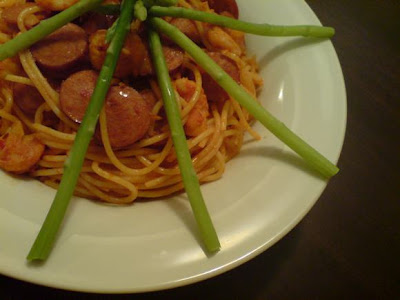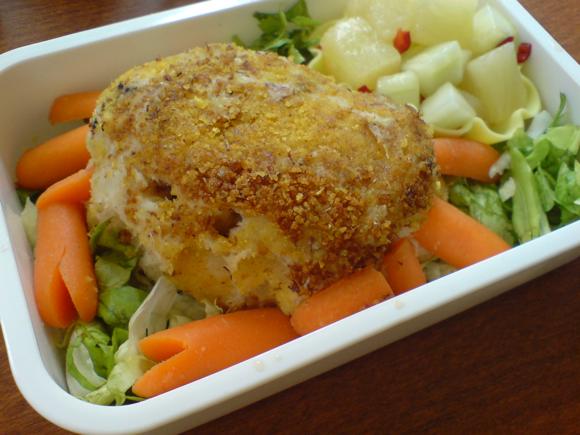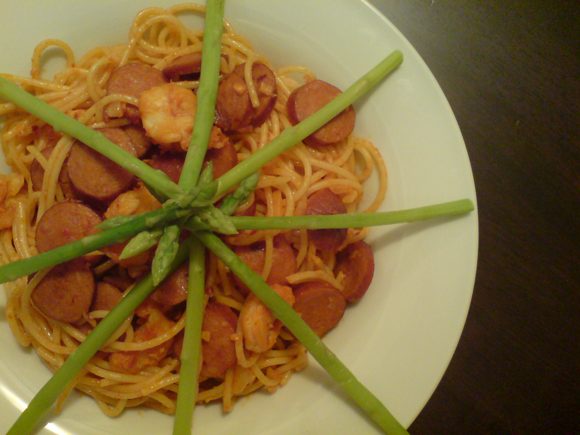My favourite dish to cook is pasta! It can be as simple or as complex to prepare as you wish, it's hearty and satisfying, and there's a lot of room for improvisation. I have a lot of favourite variations, but this is the version I make when I want to prepare some pasta in a hurry, or when I'm at the supermarket and there are no good cuts of meat left (which unfortunately, happens more often than I'd like!). I also only use one large pot, which cuts down on washing up.
Here are some rough directions for the Spicy Sausage & Prawn Spaghetti. As with most of my recipes, I don't follow exact proportions - more sausage added just means more filling on top, and more or less garlic/chilli makes the pasta more or less garlicky/spicy! Just adjust according to your own preference.
Spicy Sausage & Prawn Pasta
Spaghetti (for 2 portions) - you can substitute spaghetti for another type of pasta, but I have a fondness for spaghetti. I find a thinner pasta works better, as there is not much sauce in this recipe to coat a thicker pasta properly.
1 whole bulb garlic (or less, according to how much you like garlic)
light olive oil
sprinkle of red chilli flakes
3 -4 sausages (I currently use a brand called Johnsonville's Hot Links, but you could substitute with sausages like cabana, or any other of your choice)
10 prawns (cut into half length-wise)
1 - 2 Tbsp tomato paste
chilli oil (optional)
salt & freshly ground black pepper to taste
Boil water in a large pot. When the water is boiling, add the pasta and cook according to the packet's instructions, less one minute. Add salt to the water and stir every now and again.
Meanwhile, chop the garlic and slice the sausage and prawns. (If you are making extra for a bento, chop up extra garlic and sausage at this point.)
When the pasta is cooked, drain and rinse under cold water to stop the pasta cooking. Set aside.
Heat up some olive oil in the same pot as before, and on low heat, lightly fry the garlic until fragrant and slightly golden. Add the sausage, a sprinkle of chilli flakes and a dash of chilli oil (optional). Turn up the heat a little and fry, then add the prawns. When the prawns are cooked, pour the pasta into the pot over the toppings and mix together. (You may need to loosen up the pasta with some water first before adding it.) Add some tomato paste and mix. Add salt, freshly ground black pepper, and more chilli, to taste.
Serve immediately with a side salad or steamed asparagus.

Back

























